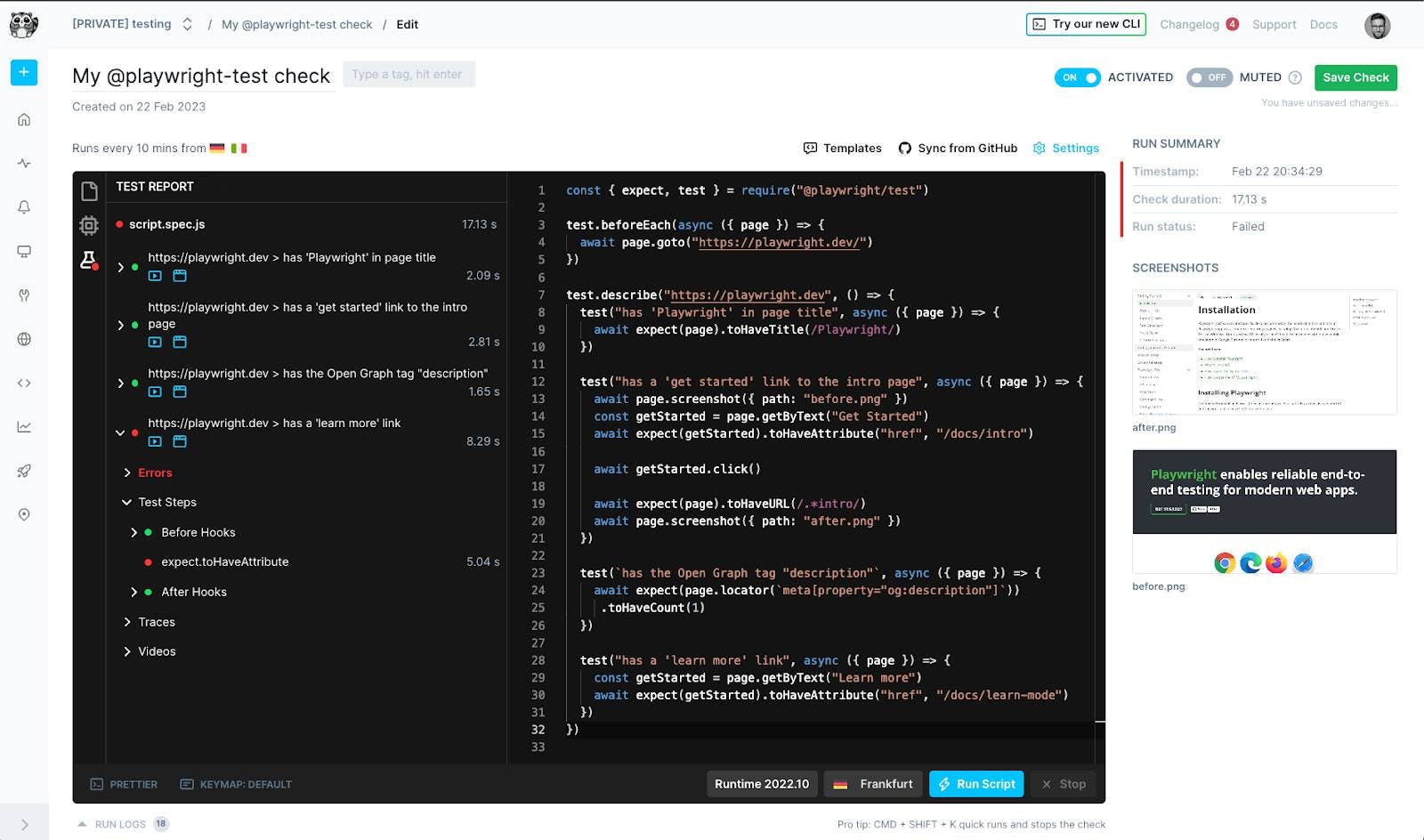Back in October of 2022 we unveiled the beta of @playwright/test. We’re now happy to announce that Playwright Test (PWT) is now generally available! We’ve worked hard to make Checkly the best way to run your Playwright tests, and we’ve also decided to make Playwright—which is experiencing a surge in usage and popularity— the default and recommended web testing framework to use with Checkly.
The benefits of using Playwright Test with Checkly
When using PWT with Checkly, you’ll experience a number of benefits over using Playwright alone for testing and monitoring. These include:
- Multiple test cases in a single check: The ability for users to create multiple independent test cases in a single check. Prior to this release, we were using check run logs to present the output of a PWT run, which was sometimes difficult to read.
- Web-first assertions and locators: Web-first assertions extend the popular
expectlibrary from jest. They are a set of explicit, high-level APIs likeawait expect(button).toHaveText().toBeDisabled() .toBeHidden() and have built-in awaiting: Playwright will automatically retry the assertion until it passes or times out, which is great for testing dynamically changing elements. - Creation of automated trace files and video recordings: You can also use PWT and Checkly to create automated trace files and video recordings of your browser and API checks, which makes tracking down problematic incidents faster and easier than ever.
In this release we’ve also added a new UI that accurately reflects the structure of PWT test cases in your checks, and makes it easier to view and sort through assets related to those checks. With the new UI, assets like screenshots, videos, traces, error logs, and test and monitoring assets are organized into test cases. Users can also take advantage of the new UI to create and edit checks (via the Browser Check Editor Page) and sort through scheduled check results (via the Check Result Page).

This GA release of PWT also makes a new rich test-results.json artifact available in the public API. This artifact is a slightly enriched version of the official PWT JSON reporter output.
How do you use the new PWT?
You can get up and running with PWT by creating a browser check and using a template, as all of our templates have Playwright Test enabled by default. For more information you can check out our getting started with browser checks tutorial in the Checkly docs.
I’d encourage you to explore the capabilities of PWT on your own, especially our new UI found in the browser check Editor page. This new UI includes a test-case explorer (with keyboard navigation), as well as a visual check status indicator and status indicators of individual test cases. You can also easily create videos and traces, and all recorded videos have thumbnails that make it easy to view the success (or failure) of a specific test. The UI also gives you the ability to explore test steps and actions, as well as timing phases. For convenience, this polished new UI is also available on the Check Result page.
What’s Next in Launch Week 2?
And that’s a wrap on all the exciting things that PWT brings to the table. I hope you’ll give PWT a try, as I’m sure you’ll see how much of an impact it can have on your testing and monitoring efforts!
Tomorrow, my colleagues will provide more details on a host of other new Checkly features, including improvements to our public dashboards and the availability of our new analytics API.
If you want to keep tabs on all of our announcements this week, follow the #ChecklyLaunch hashtag on Twitter, check out the Launch Week 2 playlist on YouTube, keep an eye out for all of our other Launch Week 2 content, and enter your monitoring as code project for a chance to win our $500 home makeover giveaway.

